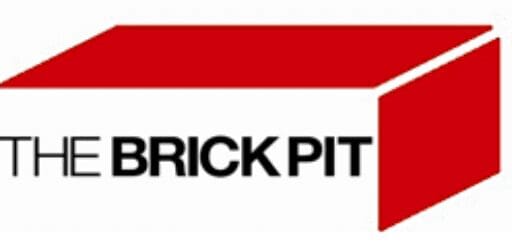So, you’re thinking about building a house, huh? Or maybe you’re just curious how many bricks it takes to construct that cozy suburban dream home you drive past every day. Either way, you’ve stumbled into the right corner of the internet. Let’s talk bricks—because, let’s face it, nothing says “solid life decision” like stacking thousands of clay rectangles into a shelter.
I’ll admit, I once tried to calculate bricks for a backyard pizza oven and ended up with enough material to build a guesthouse. (Spoiler: My math skills were not the hero of that story.) But hey, lessons learned! Today, we’re diving into the nitty-gritty of brick counts, mortar mishaps, and why your “quick DIY project” might need a spreadsheet. Buckle up, friend—this is going to be way more fun than high school geometry.
Let’s Start With Brick Basics (Because You Can’t Wing This)
Before we crunch numbers, let’s get cozy with the star of the show: the humble brick. Not all bricks are created equal, and nope, you can’t just grab whatever’s on sale at Home Depot.
Brick Dimensions: The Building Blocks of Your Sanity
Standard bricks in the U.S. usually measure 3-5/8″ x 2-1/4″ x 8″. But wait—those sizes can vary slightly depending on where you live. For example, modular bricks might adjust thickness to account for mortar joints (more on that later). Pro tip: Always confirm dimensions with your supplier unless you enjoy surprise math headaches.
Types of Bricks: Pick Your Fighter
- Clay bricks: Classic, durable, and great for load-bearing walls. They’re the Arnold Schwarzenegger of bricks.
- Concrete Bricks: Cheaper and versatile, but heavier. Think of them as the gym buddy who’s too enthusiastic.
- Sand Lime Bricks: Smooth finish, better insulation. Fancy, but pricier.
FYI, the type you choose affects quantity. Concrete bricks are bulkier, so you might need fewer—but they’ll cost you in labor.
The Million-Dollar Question: How Many Bricks Do You Actually Need?
Alright, time to math. But don’t panic—I’ll keep it simple.
Step 1: Measure Your Walls Like a Pro
First, calculate the total square footage of your walls. Here’s how:
- Perimeter: Add up the length of all exterior walls. Let’s say your house is 40 ft x 30 ft. Perimeter = 2*(40+30) = 140 ft.
- Wall Height: Standard is 8 ft, but adjust if you’re going for cathedral ceilings (or a hobbit hole).
- Total Wall Area: Perimeter x Height = 140 ft x 8 ft = 1,120 sq ft.
But wait! Subtract areas for windows, doors, and that Instagram-worthy bay window you’ll never use. Let’s assume these take up 20% of your wall space:
1,120 sq ft – 20% = 896 sq ft of brick walls.
Step 2: Bricks Per Square Foot (The Magic Number)
A standard brick with 3/8″ mortar joints covers about 5 bricks per square foot. But IMO, always add 5-10% extra for cuts, breaks, and the bricks your dog mistakes for chew toys.
Total Bricks = Wall Area x Bricks Per Sq Ft + Wastage
= 896 x 5 = 4,480 bricks
- 10% wastage = 4,928 bricks
But hold up—this is for a single-layer (single wythe) wall. If you’re building load-bearing walls (double wythe), double the count. Yep, that’s 9,856 bricks. You’re basically building a fortress.
Factors That’ll Mess With Your Brick Count (Because Life Isn’t Perfect)
1. Mortar Joints: The Silent Space Invaders
Mortar joints (the cement between bricks) typically add 3/8″ to each brick’s size. Use thinner joints, and you’ll squeeze in more bricks—but your wall might look like a toddler’s art project. Stick to standard unless you’re a mason with a death wish.
2. Wastage Allowance: Expect the Unexpected
- Cuts: Bricks rarely fit perfectly at edges.
- Breakage: Delivery guys aren’t paid to be gentle.
- Design Changes: That last-minute skylight? It’ll cost ya.
Aim for 10% wastage for simple projects, 15-20% for complex designs.
3. Wall Thickness: Single vs. Double Wythe
- Single Wythe: One layer of bricks (non-load-bearing). Great for veneers.
- Double Wythe: Two layers with a gap (load-bearing). Twice the bricks, twice the fun.
4. Brick Veneer vs. Full Masonry
Brick veneer (a single layer over wood framing) uses way fewer bricks than full masonry. It’s like the skinny jeans of construction—looks sturdy but isn’t holding up the roof.
Tools & Hacks to Save Your Sanity
Use a Masonry Calculator (No, Really)
Online calculators let you plug in dimensions, brick types, and mortar joints. They’re faster than relearning algebra.
Talk to Brick Suppliers
Local suppliers often provide free estimates. They’ll factor in regional quirks, like humidity affecting mortar dry time. Plus, they might throw in delivery discounts.
DIY vs. Hiring a Pro
- DIY: Requires time, patience, and a high pain tolerance. Expect to lay 100-300 bricks/day as a newbie.
- Pro Crew: They’ll lay 500-1,000 bricks/day. Worth it if you value your lower back.
Cost Estimation: Because Budgets Exist
Let’s crush your dreams gently:
- Bricks: 0.50−0.50−0.90 per brick. For 5,000 bricks: 2,500−2,500−4,500.
- Mortar: 5−5−10 per 100 bricks. Add 250−250−500.
- Labor: 10−10−15 per square foot. A 1,000 sq ft veneer = 10k−10k−15k.
Thermal insulation? Clay bricks insulate better than concrete. Durability? Clay lasts 100+ years; concrete cracks sooner. And don’t forget construction permits—your local government loves paperwork.
Final Thoughts: Should You Even Do This?
Look, building a house with bricks is like adopting a hippo: rewarding but intense. If you’re going DIY, start small (that pizza oven, maybe?). For full homes, hire pros unless you’ve got a year to spare and a therapist on speed dial.
At the end of the day, brick counts boil down to math, Murphy’s Law, and how much chaos you can handle. But when you’re sipping coffee in your brick-clad living room, it’ll all feel worth it. Probably.
Now go forth, calculate responsibly, and for heaven’s sake—double-check your measurements.


